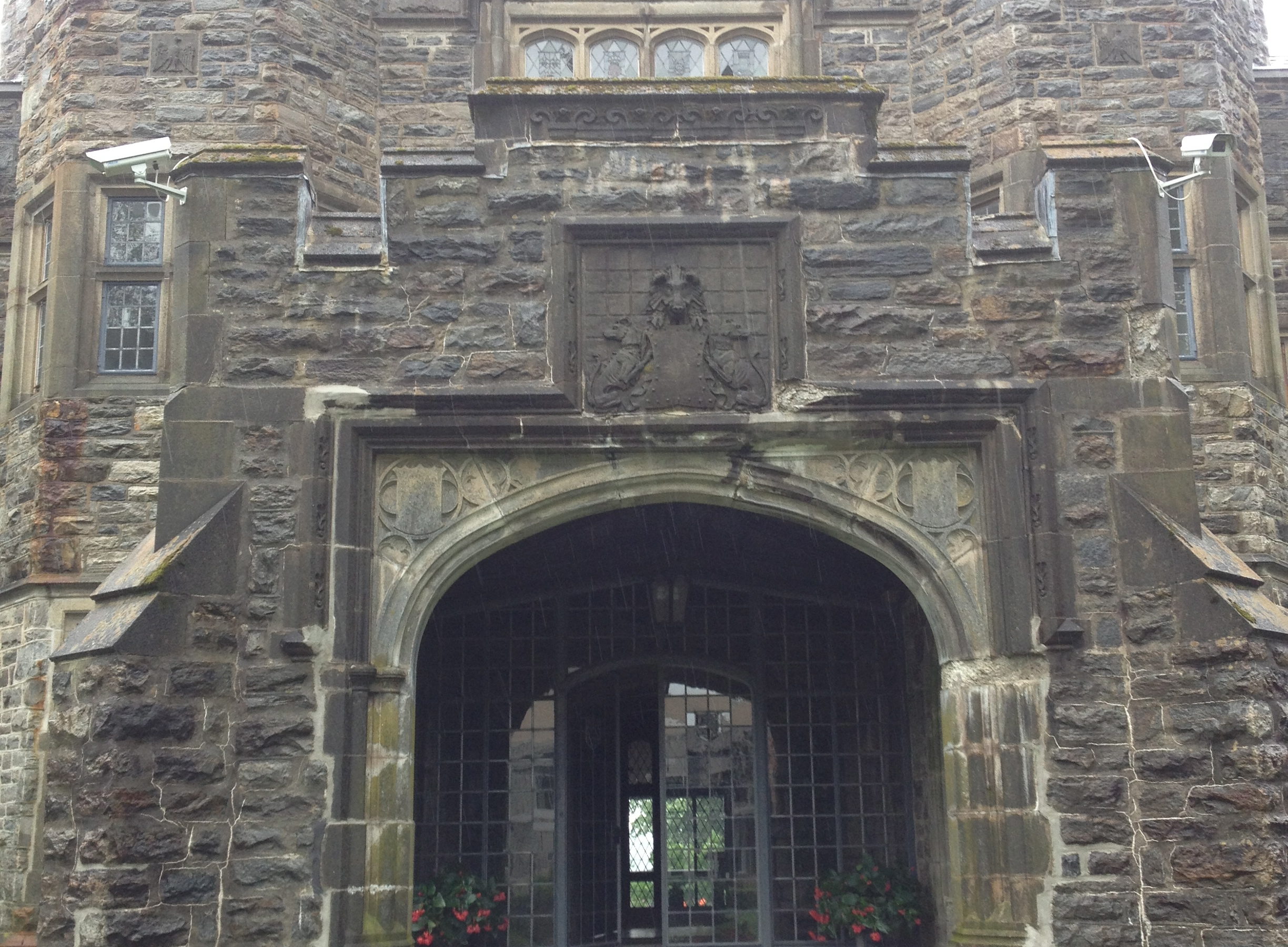Content

Wickliffe, the Castle at Maryvale and Its Gardens by Carlisle Hashim
Wickliffe Castle, a home designed by Baltimore architect Wilson L. Smith, was built for Dr. and Mrs. Walter Wickes in 1912. The 182 acre estate was originally owned by Charles Carroll, a Marylander and only Catholic signer of the Declaration of Independence. It replicates a late medieval castle similar in design to Warwick Castle in England. Tudor in style, its paneling, lead paned windows, porte cochere, turrets and tower cost $250,000 upon completion. Located north of Baltimore City, the Castle is now Maryvale’s Castle, a building like no other in a large radius of private schools. Maryvale Preparatory School is a private Catholic girl school for grades 6-12.
Picture credit: Maryvale Preparatory School
Leaded glass doors lead to a raised terrace overlooking pristine woods. To the side of the terrace is the boxwood garden, a garden that appears to be original to the house. Other designs by Wilson L. Smith do not shed light on the design of Wickcliffe’s boxwood garden. Had the Wickes wanted to replicate their garden to be of late Medieval bordering early Renaissance period, certainly boxwood would have been used. One descends from the stone terrace at Maryvale to the sunken boxwood garden. At the far corners are small stone turrets, five, six steps high. Late pictures show a tilted umbrella with garden furniture, to afford other terraced views. The boxwood room is probably close to 100 years old and is in good condition. There is a maize. One thinks of Hampton Courts, England, home of Henry VIII. In “A Garden Walk,” a book written by Adelma Grenier Simmons, she notes that the smell of box can be annoying or not. But, she believes that “Queen Anne, who at Hampton Court, had all the magnificent boxwood cut because she didn’t like the smell … wantonly destroyed years of growth.”
Was there an herbal garden surrounded by knots of box when the Wickes laid out their beds? Pollen tests would be necessary to determine what herbs were grown before the boxwood became so big that they were the only specimen. The Maryvale students are in good company. Monks, Shakespeare, and European royalty if dreamt of boxwood were “assured … of long life, prosperity and a happy marriage,” as quoted by Mrs. Adelma Grenier Simmons of Caprilands Herb Farm in Coventry, Connecticut.




